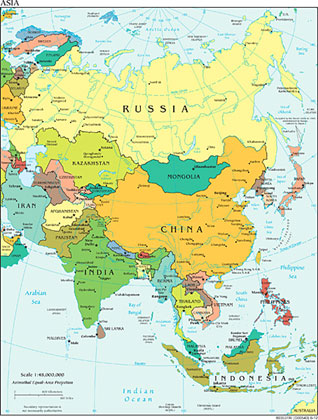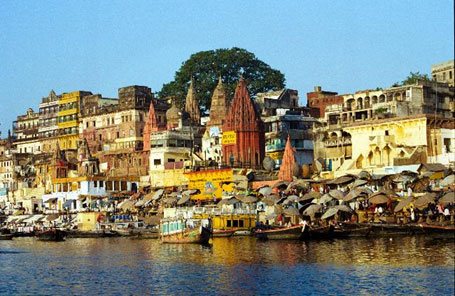

Asia occupies about 30 percent of the Earth's land area. Asia is the most populous continent with the world’s two most populous countries: China and India. Even though it is the most populous, some areas are sparsely populated. Geographic features such as mountains and basins and extreme climates prevent people from inhabiting certain areas; they live in overpopulated areas instead.
Diversity is a characteristic that can be seen in the physical features as well as the economic, political, and cultural lives of the people. Asia has developed sub regions, areas within the continent that are connected by certain characteristics.
Most of the early centers of civilization were in Asia. The cultivation of crops and domestication of animals began in these regions. Asia is also the home of many of the major religions of the modern world.
![]() Click on each of the following four characteristics to learn more about the region’s religions, languages, literacy rate, and land use. (For the purposes of this lesson, you will compare the countries of India, China, and Indonesia.)
Click on each of the following four characteristics to learn more about the region’s religions, languages, literacy rate, and land use. (For the purposes of this lesson, you will compare the countries of India, China, and Indonesia.)

Varanasi is one of the oldest continuously inhabited cities in the world. It is located on the west bank of the River Ganges in the state of Uttar Pradesh and is often referred to as the religious capital of India. History shows that pilgrims journeyed to Varanasi to cleanse their spirits in the river.
Think about this - Considering the characteristics of Asia, why do you think that a city like Varanasi is important to India and the pilgrims who traveled here? Record your thoughts in your notes and thenInteractive popup. Assistance may be required.
The city of Varanasi is important to those who practice the two predominant religions of India: Sikhism and Hinduism.
Sources for images used in this section, as they appear, from top to bottom: